#source from nasa
Explore tagged Tumblr posts
Text

#moon#space#source from nasa#Galileo spacecraft#llorsdood#meme#posting separately for the moon fans out there#can’t decide a caption so setting off into the wild as it is
383 notes
·
View notes
Text
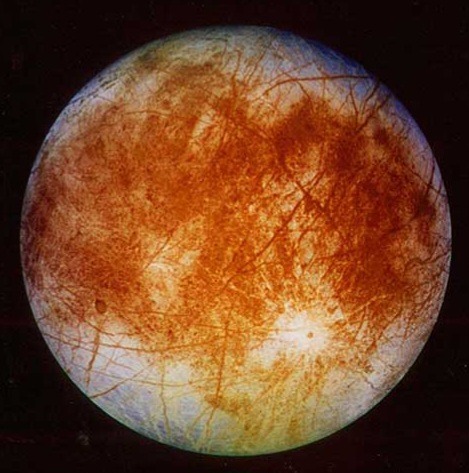

europa // human retina
#comparison#the img sources are literally NASA and a hospital in Clevland what do u want from me#sure ill link them fine#body comparison
1K notes
·
View notes
Text
Michael Thorpe Studies Sediment from Source to Sink
Sedimentary and planetary geologist Michael Thorpe finds the stories rocks have to tell, those on Earth and those from Mars. from NASA https://ift.tt/fVstOu4
0 notes
Text

Spinoffs: Space Station Innovations in Your Cart (and Heart!)
You might think NASA technology is just spaceships and telescopes, but did you know the camera in your cell phone is, too? It’s one of many NASA innovations now found everywhere on Earth.
The International Space Station has had crew living on it for 25 years straight. In that time, the space station has enabled a tremendous amount of research, helping NASA and scientists better understand long-term living in space – but it’s not just knowledge coming back down to Earth! Technologies developed for the space station and experiments conducted aboard the orbiting lab also benefit people on the planet below. Here are a few of these inventions, or spinoffs, you can find in your everyday life.
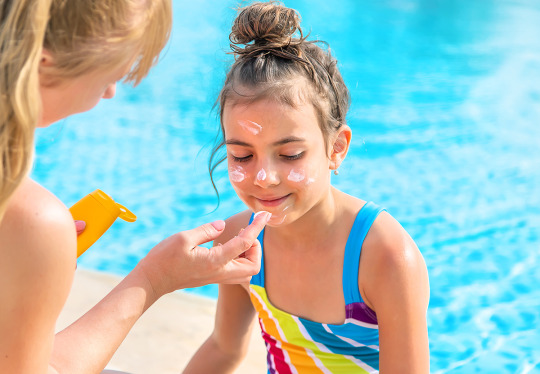
A Sunscreen That Blocks Radiation in Space – and on Your Face
After surviving for 18 months outside the International Space Station, an extremely hardy organism is now improving sunscreens and face cream products from a cosmetics company, which licensed use of the organism from NASA’s Jet Propulsion Laboratory.

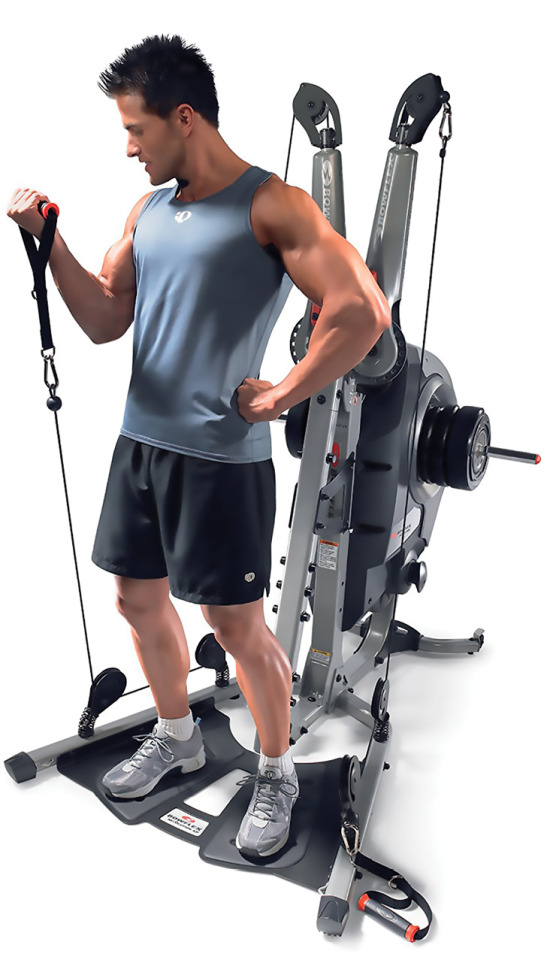
Build Muscle With or Without Gravity
Muscles atrophy quickly in space, so when astronauts began long stays on the International Space Station, they needed some specialized exercise equipment. A resistance mechanism made of a coiled metal spring formed the basis of the first way for astronauts to “lift weights” in space. Soon after, that same design became the heart of compact home gym equipment.
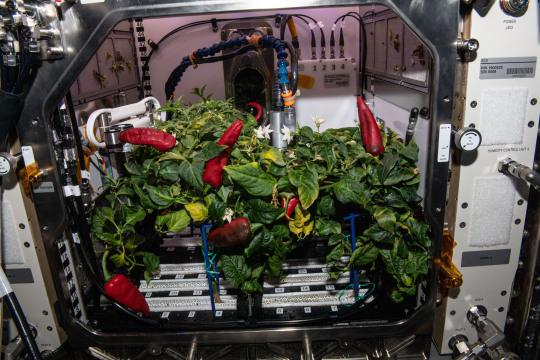
Fresh Greens Every Day of the Year
The need to grow fresh food in space pushed NASA to develop indoor agriculture techniques. Thanks to the agency’s research, private companies are building on NASA’s vertical farm structure, plant-growth “recipes,” and environmental-control data to create indoor farms, resulting in higher crop yields and better-quality produce while conserving water and energy and eliminating the need for pesticides.

Cultivating Hearts and Knees in Space
Gravity is a significant obstacle to bioprinting cells and growing human tissue on Earth because heavier components settle to the bottoms of petri dishes. In the absence of gravity, each cell layer stays in place, which is how it’s possible to grow heart and knee tissue on the space station. The same principle also allows mixing of complex pharmaceuticals on orbit.
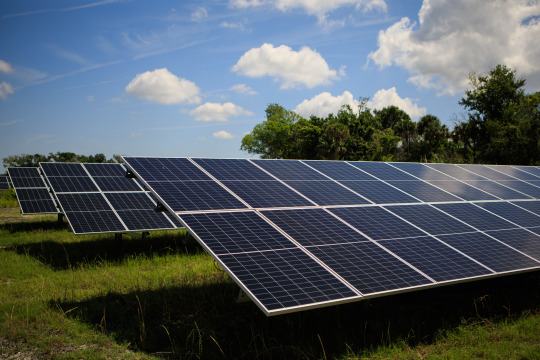
Storing Oodles of Energy
NASA chose nickel-hydrogen batteries to power the Hubble Space Telescope and the International Space Station because the technology is safe, reliable in extreme temperatures, and long-lived. NASA’s improvements brought down the cost of the technology, which is now used by large-scale utilities and renewable power plants that need to store energy generated by intermittent sources.
You can read about many more products sourced from the ISS on spinoff.nasa.gov.
Make sure to follow us on Tumblr for your regular dose of space!
2K notes
·
View notes
Text
Phantom of the Manor
AKA "The Batfam unintentionally start giving ritual offerings to the Phantom. Danny, who's been mistaken as the Phantom of the Opera, is wondering why his hoodie pockets are full of tomato slices??" prompt idea!
Headcanon that Ghosts become more powerful the more people believe in them, kind of like deities. Danny's never really had to deal with the whole "ritualistic sacrifices to Bloody Mary" or "superstitious prayers against Davey Jones" because Phantom is a Hafta. Danny doesn't need people to believe in him or worship him.
So, he's never gotten a ritual offering before.
Which is why he's absolutely baffled when he shoves his hand into his hoodie pocket to grab his phone and feels something... squishy. And cold. Both Sam and Tucker scream as Danny jolts to his feet with a squeamish shriek. He damn near Goes Ghost as he tries to tear off his hoodie, regardless of the staring mall-walkers. Danny finally manages to fling the hoodie onto their table, scrambling to Sam and Tucker's sides, trying to breath through a panicked: "There'ssomethinginmypocket!!"
Sam carefully pokes around until she finds... squished tomato slices? They're oily and salted like a tomato caprese without the cheese. Which is an interesting choice for a snack. You'd think Danny would at least use a Ziplock bag or something?
("Ancients! Of course, I didn't put them there, Sam!")
Fast-forward a couple of weeks. Danny's going insane because why the hell are there tomatoes literally everywhere? Every couple of days (or hours, depending on the day), he finds different types of tomatoes all over the place. In bed when he wakes up. In his jean pockets at school. Even in the shower, he'll be blindly trying to find the shampoo bottle and come across a handful of grape tomatoes. He can't. Handle. It. Anymore. Danny's going to become the "Tomato Man" at school from how often he randomly pulls out tomatoes from his pockets. Like he needs another reason for Dash to mock him.
The last straw was when Danny was Full Ghost and felt something... itchy in his suit. He knew before he saw it. Danny tentatively pulled the sleeve of his suit open, silently praying that it wasn't what he thought it was, and- yeah. There's V-8 smeared from his goddamn elbow to wrist. He had to fight with tomato juice in his suit for several hours. And that's it; Danny literally can't take it anymore. He goes to Frostbite, begging the Yeti to help him with his Tomato Problem.
Only to be told he's receiving offerings. Which are apparently incredibly sacred and should be appreciated. (It'd be easier to appreciate if it was, like, cash or something. Maybe a Nintendo Switch. Instead, his patrons are worshipping him by offering... tomatoes. Great.)
So, clearly, the only option is to go straight to the source (i.e., his patrons) and tell them to Fucking Stop Giving Me Tomatoes. The next time he feels something weighty in his pocket (gross!), he follows the thready connection of his worshippers through a portal.
And Danny steps out in his full Ghost Regalia (because clearly they're worshipping Phantom, right? So Danny can't exactly show up in ripped jeans and his favorite NASA hoodie). The family sits at a dinner table... which is a little weird, since he'd expected an altar or something. But even weirder is the beady, predatory that look borderline-violent staring at him from everybody at the table. There's an uncomfortable silence more tense than dinners at Vlad's mansion.
Then, Danny carefully scoops out the soupy, baked grape tomatoes from his pocket and dumps them on the table. He doesn't wait for them to question it, just points to the tomatoes and says, "I appreciate the offerings, really, but it's gotta stop. It's gross. I have to wash tomato juice out of my clothes every day. If you're gonna leave an offering, no. More. Tomatoes. Please."
The oldest man seems jolted out of his stupor.
"Excuse me, but could you please explain why you've come to our home?" The man asks cordially. (As if Danny couldn't see him carefully gripping his steak knife like a throwing dart. And that's just rude, honestly. Danny was invited.)
"Uh, I'm Phantom? You literally give me offerings every day. Again, I appreciate it, I never thought I'd have diehard fans, but I don't even really like tomatoes. I mean, they're fine in salsa and stuff, but even I won't eat pocket-tomatoes."
"I believe there may be a misunderstanding. We don't worship a deity named Phantom nor have we left any offerings." The oldest says. He seems like he's about to continue when one of the black-haired adults interrupts him with a nervous, "Uh, B? About that..."
So. Yeah. It turns out Dick Grayson and Jason Todd forced the family to watch Phantom of the Opera, which spawned the joke of offering any food they don't like (i.e., tomatoes) to "the Phantom" (i.e., their trashcan). More than half the family doesn't like tomatoes and Alfred uses it as a punishment for breaking something, overworking, etc. They'd gotten pretty sneaky about scraping their leftovers into the bin but had gotten into a habit of saying "this one's for the Phantom, a treat for the Phantom," or something incredibly stupid like that.
Danny's just... a little relieved, honestly? Because he's literally fifteen and wouldn't really know what to do with followers if he had them. Plus, now he doesn't have to worry about waking up with tomatoes in his bed or making excuses for all his tomato-hoarding while at school. (Which was not necessarily the right thing to mention to Bruce "Serial Adopter" Wayne. Practically the whole table turned to stare at Bruce when Danny mentioned he's apparently an underage deity, waiting for Bruce to sweep in with a well-executed, "Well, it's getting late. Why don't you stay the night?" Because Bruce apparently can't help himself from collecting another black-haired, blue-eyed kid.)
1K notes
·
View notes
Text

Mount Fuji, Japan, as seen from the International Space Station. An active stratovolcano and the tallest peak in Japan at 12,389 feet (3,776 m), Fuji has an extremely symmetrical cone that is snow‑capped for several months of the year. During warmer months, climbing routes make it possible for hundreds of thousands of people to hike the summit each year.
35.362727°, 138.730265°
Source imagery: NASA
526 notes
·
View notes
Text
The Deep Webb
A YTP of NASA's 2022 live presentation showcasing the first images taken from the James Webb Space Telescope.
This monumental feat of human discovery was presented to the world in the form of a scuffed livestream where technical errors abound and production repeatedly failed to think on their feet to remedy issues as they came up. Peppered with some charmingly awkward/out-of-touch performances by the various presenters, most of which are astronomers and engineers whom I have the deepest respect for despite it all.
I watched this event as it was broadcast and immediately knew it would make for an excellent YTP source. I was so very correct, and my biggest regret was sitting on it for two years rather than working with it immediately.
Full video with captions here!
517 notes
·
View notes
Text
❝ sky full of stars, j. burrow. ❞ ┉


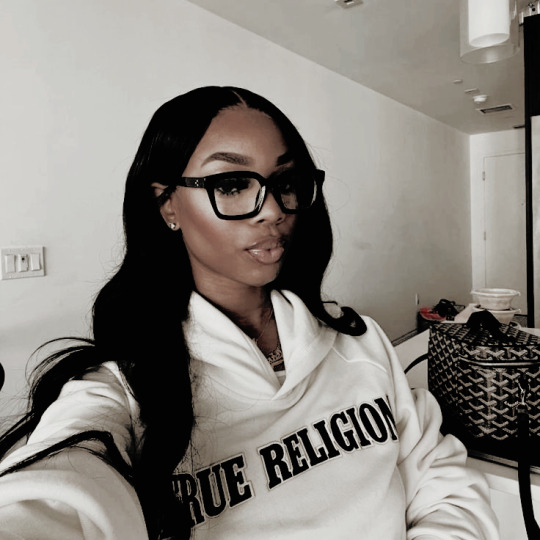
⁎⠀┉⠀summary: joe's a big space nerd. you're a big space nerd. it's a match made in space nerd heaven.
⁎⠀┉⠀author's note: literally laid awake last night thinking about this. decided to write it during my lecture. short and sweet but i love writing joe in love. suppressing the urge to cite my sources on this lol. ty to wikipedia's black holes article <3 also don't worry y'all will still get a game day fic on sunday 🙂↕️
⁎⠀┉⠀warnings: science talk, general cheesiness.
⁎⠀┉⠀pairing: joe burrow x nasa engineer!reader.
⁎⠀┉⠀word count: 1k.

Your eyes scanned the living room, your gaze lingering on the framed LSU jersey hanging on the wall. A soft chuckle escaped your lips as you thought of Joe's insistence on displaying his pride so prominently in his Cincinnati home. Despite his celebrity status, he remained as down-to-earth as the day the two of you met eight months ago, a quality you cherished deeply.
The gentle hum of the air conditioner filled the quiet room as the documentary's narrator droned on about black holes. Joe's breathing grew even and steady, his head comfortably nestled in your lap. You felt his hand twitch in his half-sleep, his thumb brushing against your thigh through the fabric of your shorts. You gently stroked his hair, a soft smile playing on your lips.
Your thoughts drifted to the upcoming mission you were helping to prepare at the Johnson Space Center. The excitement of possibly making more discoveries on your Mars probe was palpable, and you couldn't wait to get back to Houston. Yet, here you were, feeling more content than ever, with a man you never thought you’d end up with. The rhythmic beat of Joe's heart against your palm was a reminder of the love the two of you had found amidst your two dramatically different lives.
You leaned back, your hand still cradling Joe's head, and refocused on the documentary. The TV screen flickered with images of stars, galaxies, and cosmic phenomena that you knew so well from your work, yet seeing them here, in Joe's home, made them feel so much more profound.
“So, how do black holes, like, eat stars?” Joe’s sleepy voice interrupted the silence. His eyes remained closed, but his mind was clearly still processing the information he had been hearing.
“It’s not so much that they eat stars, but rather they have such intense gravitational pull that nothing can escape them, not even light,” You explained, your voice a soothing murmur. You felt Joe’s head shift slightly, his curiosity piqued.
“So, it’s like a cosmic vacuum cleaner?” He mumbled, a hint of a smile in his voice.
You laughed, the sound echoing lightly in the room. “In a way, yes. But a vacuum cleaner you definitely don’t want to get too close to. Once something enters a black hole, it’s gone forever.”
Joe’s eyes fluttered open, and he looked up at you, the corners of his mouth tugging into a smile. “How can something be that powerful?” His gaze was earnest, the curiosity in his eyes warming your heart.
“It’s all about the mass and gravity. When a star dies and collapses, it can become so dense that its gravity is just too much for anything to resist. Not even light can escape, which is why we call them black holes. They’re like the universe’s trapdoor.” Your voice was soft, your eyes shining with the same enthusiasm that had captured Joe’s attention when you’d first described your job to him.
Joe nodded, his eyes drifting back to the TV screen. His fingers twined with yours, and you felt a gentle squeeze. “And what happens when something does fall in?” His question was genuine, his curiosity a bridge between your worlds.
“Well, we think that anything that gets too close gets stretched out like spaghetti. But before that, it passes the point of no return, gravity gets so intense that it bends time and space itself. It’s like nothing we can truly imagine.” Your words painted a vivid picture in the quiet room, your voice a mix of wonder and knowledge.
“You’re like nothing I could truly imagine. You’re like my own black hole, pulling me in with your brilliance every day.” Joe’s words were a gentle whisper, his blue eyes opening to find yours, a warmth that didn’t quite match the cosmic chaos on the screen.
Your heart fluttered. “You’re not so bad yourself, Mr. Heisman.” You leaned down to kiss his forehead, your smile tender. The room felt smaller, the universe’s mysteries forgotten as the two of your shared a moment of quiet intimacy.
The documentary played on, but your attention had shifted. Joe’s hand found yours again, fingers interlocking. He pulled himself up, dirty blonde hair messy from rest, eyes squinting in the light. “You know I’m going to keep asking questions until I understand everything you do, right?”
“I wouldn’t have it any other way, Joey. You know I love talking about this stuff with you.” Your voice was filled with affection as you reached for the remote and paused the documentary. The room was bathed in the soft glow of the TV, the only light source in the otherwise darkened space.
Joe sat up, his hand still holding yours. He leaned in, your eyes locking for a brief moment before your lips met in a gentle kiss that grew in passion. His arms wrapped around you, pulling you closer as you shifted on the couch to face him. Your kisses grew deeper, a silent declaration of your love and appreciation for one another’s differences and shared moments of wonder.
As you pulled apart, Joe whispered, “You know, I still can’t believe you agreed to go out with me. A guy who throws a football for a living asking out a NASA engineer.” His self-deprecation made you laugh again, the sound music to his ears. “Still not sure why you’re with me.”
“Why not?” you said, your voice filled with warmth. “You’re smarter than you give yourself credit for, Joe. And you’re incredibly good at what you do. Maybe not launching rockets, but you have your own kind of rocket science going on out there on the field.”
Joe chuckled, the sound rumbling through his chest and into yours. “You always know what to say to boost my ego.”
“I’ll say whatever it takes to get me ahead of Ja’Marr in your heart,” you teased with a laugh, leaning forward to steal another kiss from his pink lips. The warmth of his breath tickled your skin, sending a shiver down your spine.
Joe’s arms tightened around you, his eyes lighting up with mischief. “I don’t know, he’s pretty good at catching my throws.”
“Well, I’m pretty good at catching your heart, so I think we’re even,” you quipped back, your eyes sparkling with love and amusement.
Joe’s chuckle grew louder, the sound rumbling through the room like thunder. He leaned back, pulling you with him until you were lying on top of him, your legs draped over his. “You definitely win that title, babe. No contest.”
Your smile never left your face as you looked down at him. His strong arms wrapped around your waist, holding you in place. You felt his heartbeat beneath you, a steady drum that matched the rhythm of your own. The air between the two of you was electric, the kind of charge that could spark a star into existence.
#&. joey b.#joe burrow x reader#joe burrow#cincinnati bengals#bengals#joe burrow fanfic#joe burrow imagine#joe burrow fluff#joe burrow fic#joe burrow fan fic#black!fem!reader#black!oc#black!reader#x black fem reader#x black reader
431 notes
·
View notes
Photo

2025 January 6
Colliding Spiral Galaxies from Webb and Hubble Image Credit: NASA, ESA, CSA, STScI
Explanation: Billions of years from now, only one of these two galaxies will remain. Until then, spiral galaxies NGC 2207 and IC 2163 will slowly pull each other apart, creating tides of matter, sheets of shocked gas, lanes of dark dust, bursts of star formation, and streams of cast-away stars. The featured image in scientifically assigned colors is a composite of Hubble exposures in visible light and Webb exposures in infrared light. Astronomers predict that NGC 2207, the larger galaxy on the right, will eventually incorporate IC 2163, the smaller galaxy on the left. In the most recent encounter that about peaked 40 million years ago, the smaller galaxy is swinging around counter-clockwise and is now slightly behind the larger galaxy. The space between stars is so vast that when galaxies collide, the stars in them usually do not collide.
∞ Source: apod.nasa.gov/apod/ap250106.html
238 notes
·
View notes
Text
THE EUROPA CLIPPER LAUNCHED THIS MORNING, AND I AM SO NOT NORMAL ABOUT IT!!!!!
Space is so fucking awesome. We're headed to one of JUPITER'S MOONS!
Every time a launch happens, it makes the latent space enthusiast in the back of my brain jump up and down. It also derailed all my plans for today. I did have plans.
Instead, someone made one comment about how I could now maybe make mission patches on my embroidery machine, and the space thing crossed over with my current hyperfixation (silm) to produce THIS:

Mission patch for the launch of Gil-Estel! A bit messy, but a good place to start!
Design and linguistics details under the cut, because I put WAY too much thought into it and now must talk SOMEONE's ear off about it. Feel free to ignore this bit:
So, to start: Elvish NASA. I chose to call them Vardildi Elengolmo Vilciryamoyë, or VEV. The Followers of Varda, Astronomers and Astronauts. This could very much be totally wrong. Vardildi is Varda+the suffix used in Yavannildi, the followers of Yavanna. Elengolmo comes from the coined word for astronomer, Elengolmë (star-lore), with the -o suffix from nolmo, wise person. Vilciryamoyë takes the vil- from the root of vilya, meaning air, sky. ciryamo is mariner, and yë is the suffix added to the second word meaning 'and'. (I may be very, VERY wrong on this! If anyone has better ideas, I very much welcome input/guidance/constructive criticism)
So I stuck the tengwar for this on either side of the patch. (None of the tengwar is all that legible, though, I'm working on getting that sorted out) Most NASA mission patches don't actually have NASA on them, but I put it on anyway. Here is the tengwar and the start of a logo I made an attempt at (the tehta is supposed to be a shooting star, but that did NOT come through clearly in the embroidery [because it's tiny]):
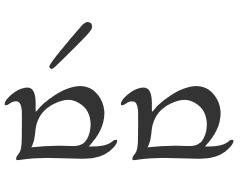

(Probably going to try to make an elvish NASA patch before too long, honestly)
Most NASA patches (from research I did with great self-restraint here) have the (last) names of the astronauts. Not sure if they also have the name of the craft or if that's generally somewhere else, but I put both--Eärendil Ardamírë (his fathername and mothername) are the tengwar at the bottom of the patch, and Vingilotë is written on the keel of the ship. None of these are legible because they are small, and my machine has limits. It's a work in progress. Also I apologize for the bad lighting in the photo.
NASA patches sometimes also have a mission motto. That's the tengwar across the top of the patch here-- aiya Eärendil elenion ancalima, Hail Eärendil, brightest of stars (a common cry among elves and Frodo [when facing Shelob]).
(I half wanted to do something a bit more funny--maybe something like 'Now I have become Venus,' or 'Do I get to come down?' but this was a bit easier since it comes pre-translated into Quenya and tengwar, and also I have no faith in my Quenya translations that are any longer than a word)
The horizon is flat because Númenor exists, in the middle there between the shore of Middle-Earth and a teensy bit of Valinor and the Enchanted Isles.
The design for the Silmaril is sort of taken from the heraldic device Tolkien designed for the Silmarilli (though it isn't clear), and it is rayed with the six-pointed star from Eärendil's device. (I stuck the moon phases from the same source around the edges as well)
This was really fun, even if it might be the silliest thing I've ever made! It definitely needs some workshopping--i don't mind the black lines framing some sections from the background fabric, but I might try turning all the tengwar into lines of stitches instead-the satin columns really are illegible.
I now need to restrain myself from doing some sort of NASA/Astronaut Earendil AU, because it now sounds kind of fun (I do not have the background knowledge for this)
Sources:
NASA patches here: https://www.shopnasa.com/collections/patches
Quenya translations here: https://www.elfdict.com/
Tengwar transcriptions here: https://www.tecendil.com/
And if you want info on the Europa Clipper mission, here: https://science.nasa.gov/mission/europa-clipper
Embroidery digitization done with Embrilliance Stitchartist 1, embroidery done with a Brother SE630 machine. Thread is Brothread Cotton and YLI cotton bobbin thread, with a little sulky rayon on the Silmaril. Cloth is a black linen from Fabric Wholesale Direct.
#earendil#silmarillion#space is cool#machine embroidery#pityahano#craft#surprisingly pleased with how this turned out#since it was less 'trace this colored pencil drawing by Tolkien'#and more 'what does a ship look like in 3000 stitches or less'#space#astronaut earendil#vev-elvish nasa#lord of the rings#silmaril
270 notes
·
View notes
Note
Your angst takes are so heart breaking 🥺🥺🥺
omg please oh please tell me your thoughts on shapesmith
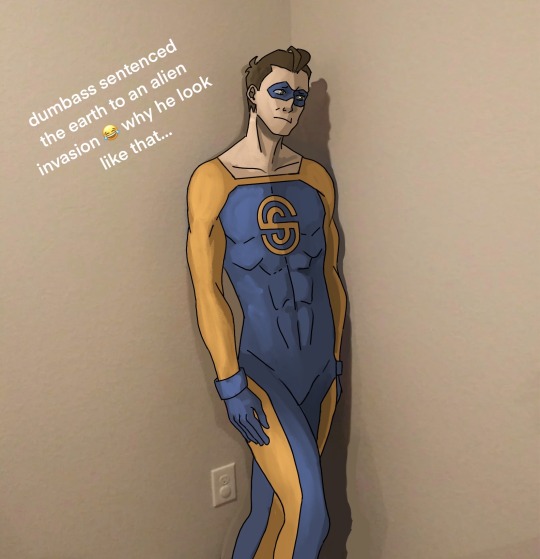
full disclosure, shapesmith has never been on my radar as a particularly interesting character for me, like… angst wise. but i’ll give you something because i’m nothing if not capable of making people suffer
shapesmith reminds me, oddly enough, of john doe (joker) from the telltale batman series. i played that shit YEARS ago. but there’s something about the two of them that feels the same to me, and it might be the endearing unfamiliarity with the world around them — in telltale, i think joker had memory problems — and their source of heroic action being a result of mimicking those around them. also their childish naïveté.
“my bed’s a racecar!”
hes also a silly guy. like john doe and oliver, to an extent, he has an incredibly low awareness of how the world functions, what morals really are. thats all well and complicated, but i think the sadder thing about him is that he felt this complete pull away from his people, a fundamental difference between them, and was reckless enough to follow the dream even though it cost his people EVERYTHING. its a common theme in invincible where characters follow their own paths selfishly, setting themselves apart from what’s expected of them (nolan and mark come to mind almost immediately). i think shapesmith takes a lot of blame from the people around him for the sequid invasion and while he does feel guilt, he has no clue how to repent for that in a way that is appealing to humans. unlike nolan and oliver, nobody’s teaching this guy how to be human.
even the way he interacts with powerplex is, i feel, a genuine attempt to understand him. shapeshifting into invincible wasn’t mocking him, i think he just took it very literally and was pretty excited to be able to do something helpful. obviously not helpful, because he misread it. he also seemed gutted that the police didn’t recognize who he was.
he’s not sad in this gut wrenching, overly tragic way. it’s kind of a slow-bleed pity, a knife wound ya didn’t really feel at first, where he’s so funny until you really think about it. then it’s like “oh, this guy didn’t get his dream of seeing the stars bc he got fired from nasa, nobody likes him, he doesn’t understand the world, he’s a piece of utility for the gda, and he has nobody to talk to even though there’s other characters who might get it”
like ouch! hope this suffices. a little think piece and a silly doodle just about sums up what kind of blog i aim to be
120 notes
·
View notes
Text




IN EVENT OF MOON DISASTER - speech written by Bill Saffire for the Apollo XI space flight, in the event the astronauts were stranded on the Moon and could not return to Earth. (source)
Transcript under the cut
To : H. R. Halderman
From: Bill Safire
July 18, 1969
IN EVENT OF MOON DISASTER:
Fate has ordained that the men who went to the moon to explore in peace will stay on the moon to rest in peace. These brave men, Neil Armstrong and Edwin Aldrin, know that there is no hope for their recovery. But they also know that there is hope for mankind in their sacrifice. These two men are laying down their lives in mankind's most noble goal: the search for truth and understanding. They will be mourned by their families and friends; they will be mourned by their nation; they will be mourned by the people of the world; they will be mourned by a Mother Earth that dared send two of her sons into the unknown. In their exploration, they stirred the people of the world to fees as one; in their sacrifice, they bin more tightly the brotherhood of man. In ancient day, men looked at stars and saw their heroes in the constellations. In modern times, we do much the same, but our heroes are epic men of flesh and blood. Others will follow, and surely find their way home. Man's search will not be denied. But these men were the first, and they will remain the foremost in our hearts. For every human being who looks up at the moon in the nights to come will know that there is some corner of another world that is forever mankind.
PRIOR TO THE PRESIDENT'S STATEMENT:
The President should telephone each of the widows-to-be.
AFTER THE PRESIDENT'S STATEMENT, AT THE POINT WHEN NASA ENDS COMMUNICATIONS WITH THE MEN:
A clergyman should adopt the same procedure as a burial at sea, commending their souls to "the deepest of the deep" concluding with the Lord's Prayer.
#this is my FAVOURITE space diplomacy document i think about it so much bill you sly dog#space#outer space#history
401 notes
·
View notes
Text
since we're all talking about eclipses let me share my favourite eclipse fact: the mystery eclipse of 811
eclipses were pretty noteworthy in the middle ages, as were all movements of the heavenly bodies - particularly for calculating the date of easter (which is determined by the lunar cycle, following the calculation of passover).
a list of eclipses can be found in a few manuscripts produced between 809 and 812 in the carolingian empire, and it's broadly accurate. the entries record the date and time of the eclipse, as well as its location in the sky, as for the eclipse of 807: "In 807, there was again an eclipse of the Sun on 11 February in the 26th part of Aquarius around the sixth hour of the day." (this is correct for the year 807, and was probably a record of a past event.)
however, one entry simply reads: "In 811, there was an eclipse of the Sun on 27 April, in the first hour of the day." NASA records show when historical eclipses occured, and there was no eclipse visible in Europe in the year 811. But there was an eclipse that year - in Australia (on the 26th of May).
So the list wasn't a record of observed eclipses, but a list of predictions - using the easter table and some very good maths, the author was able to calculate when future eclipses would occur, even in places where nobody from europe had ever been. the location wasn't included, because they knew that the constellations would look different in the southern hemisphere.
this all goes to show that medieval people weren't stupid - their understanding of the world may have been vastly different from our own, but they were just as curious as anybody else at any other point in time. dismissing the middle ages as a 'dark age' when knowledge was stunted by belief fails to see how wonderful the middle ages can be - how people have always been brilliant, and curious, and have sought out new knowledge, all through history.
(this info comes mainly from a blog post by the wonderful james t. palmer, which is here, and has some more source links. ive also heard about it in papers/wider reading but i cant give a source for those)
655 notes
·
View notes
Text
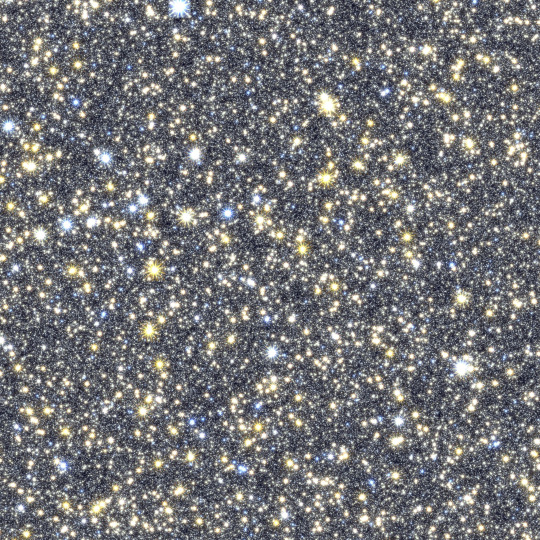
A simulated image of NASA’s Nancy Grace Roman Space Telescope’s future observations toward the center of our galaxy, spanning less than 1 percent of the total area of Roman’s Galactic Bulge Time-Domain Survey. The simulated stars were drawn from the Besançon Galactic Model.
Exploring the Changing Universe with the Roman Space Telescope
The view from your backyard might paint the universe as an unchanging realm, where only twinkling stars and nearby objects, like satellites and meteors, stray from the apparent constancy. But stargazing through NASA’s upcoming Nancy Grace Roman Space Telescope will offer a front row seat to a dazzling display of cosmic fireworks sparkling across the sky.
Roman will view extremely faint infrared light, which has longer wavelengths than our eyes can see. Two of the mission’s core observing programs will monitor specific patches of the sky. Stitching the results together like stop-motion animation will create movies that reveal changing objects and fleeting events that would otherwise be hidden from our view.
youtube
Watch this video to learn about time-domain astronomy and how time will be a key element in NASA’s Nancy Grace Roman Space Telescope’s galactic bulge survey. Credit: NASA’s Goddard Space Flight Center
This type of science, called time-domain astronomy, is difficult for telescopes that have smaller views of space. Roman’s large field of view will help us see huge swaths of the universe. Instead of always looking at specific things and events astronomers have already identified, Roman will be able to repeatedly observe large areas of the sky to catch phenomena scientists can't predict. Then astronomers can find things no one knew were there!
One of Roman’s main surveys, the Galactic Bulge Time-Domain Survey, will monitor hundreds of millions of stars toward the center of our Milky Way galaxy. Astronomers will see many of the stars appear to flash or flicker over time.
youtube
This animation illustrates the concept of gravitational microlensing. When one star in the sky appears to pass nearly in front of another, the light rays of the background source star are bent due to the warped space-time around the foreground star. The closer star is then a virtual magnifying glass, amplifying the brightness of the background source star, so we refer to the foreground star as the lens star. If the lens star harbors a planetary system, then those planets can also act as lenses, each one producing a short change in the brightness of the source. Thus, we discover the presence of each exoplanet, and measure its mass and how far it is from its star. Credit: NASA's Goddard Space Flight Center Conceptual Image Lab
That can happen when something like a star or planet moves in front of a background star from our point of view. Because anything with mass warps the fabric of space-time, light from the distant star bends around the nearer object as it passes by. That makes the nearer object act as a natural magnifying glass, creating a temporary spike in the brightness of the background star’s light. That signal lets astronomers know there’s an intervening object, even if they can’t see it directly.
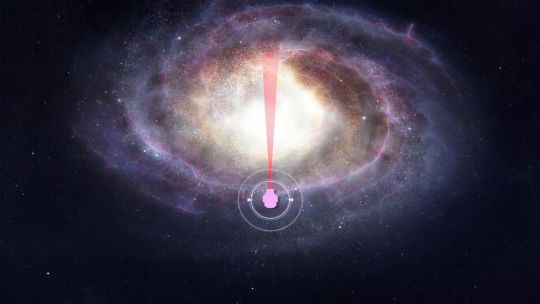
This artist’s concept shows the region of the Milky Way NASA’s Nancy Grace Roman Space Telescope’s Galactic Bulge Time-Domain Survey will cover – relatively uncharted territory when it comes to planet-finding. That’s important because the way planets form and evolve may be different depending on where in the galaxy they’re located. Our solar system is situated near the outskirts of the Milky Way, about halfway out on one of the galaxy’s spiral arms. A recent Kepler Space Telescope study showed that stars on the fringes of the Milky Way possess fewer of the most common planet types that have been detected so far. Roman will search in the opposite direction, toward the center of the galaxy, and could find differences in that galactic neighborhood, too.
Using this method, called microlensing, Roman will likely set a new record for the farthest-known exoplanet. That would offer a glimpse of a different galactic neighborhood that could be home to worlds quite unlike the more than 5,500 that are currently known. Roman’s microlensing observations will also find starless planets, black holes, neutron stars, and more!
youtube
This animation shows a planet crossing in front of, or transiting, its host star and the corresponding light curve astronomers would see. Using this technique, scientists anticipate NASA’s Nancy Grace Roman Space Telescope could find 100,000 new worlds. Credit: NASA’s Goddard Space Flight Center/Chris Smith (USRA/GESTAR)
Stars Roman sees may also appear to flicker when a planet crosses in front of, or transits, its host star as it orbits. Roman could find 100,000 planets this way! Small icy objects that haunt the outskirts of our own solar system, known as Kuiper belt objects, may occasionally pass in front of faraway stars Roman sees, too. Astronomers will be able to see how much water the Kuiper belt objects have because the ice absorbs specific wavelengths of infrared light, providing a “fingerprint” of its presence. This will give us a window into our solar system’s early days.

This animation visualizes a type Ia supernova.
Roman’s High Latitude Time-Domain Survey will look beyond our galaxy to hunt for type Ia supernovas. These exploding stars originate from some binary star systems that contain at least one white dwarf – the small, hot core remnant of a Sun-like star. In some cases, the dwarf may siphon material from its companion. This triggers a runaway reaction that ultimately detonates the thief once it reaches a specific point where it has gained so much mass that it becomes unstable.
youtube
NASA’s upcoming Nancy Grace Roman Space Telescope will see thousands of exploding stars called supernovae across vast stretches of time and space. Using these observations, astronomers aim to shine a light on several cosmic mysteries, providing a window onto the universe’s distant past. Credit: NASA’s Goddard Space Flight Center
Since these rare explosions each peak at a similar, known intrinsic brightness, astronomers can use them to determine how far away they are by simply measuring how bright they appear. Astronomers will use Roman to study the light of these supernovas to find out how quickly they appear to be moving away from us.
By comparing how fast they’re receding at different distances, scientists can trace cosmic expansion over time. This will help us understand whether and how dark energy – the unexplained pressure thought to speed up the universe’s expansion – has changed throughout the history of the universe.
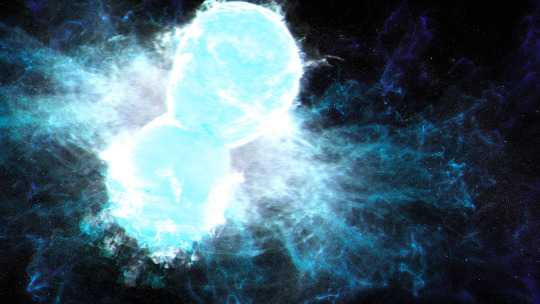
NASA’s Nancy Grace Roman Space Telescope will survey the same areas of the sky every few days. Researchers will mine this data to identify kilonovas – explosions that happen when two neutron stars or a neutron star and a black hole collide and merge. When these collisions happen, a fraction of the resulting debris is ejected as jets, which move near the speed of light. The remaining debris produces hot, glowing, neutron-rich clouds that forge heavy elements, like gold and platinum. Roman’s extensive data will help astronomers better identify how often these events occur, how much energy they give off, and how near or far they are.
And since this survey will repeatedly observe the same large vista of space, scientists will also see sporadic events like neutron stars colliding and stars being swept into black holes. Roman could even find new types of objects and events that astronomers have never seen before!
Learn more about the exciting science Roman will investigate on X and Facebook.
Make sure to follow us on Tumblr for your regular dose of space!
#NASA#astronomy#telescope#Roman Space Telescope#dark energy#galaxies#cosmology#astrophysics#stars#galaxy#space images#time#supernova#Nancy Grace Roman#black holes#neutron stars#kilonova#rogue planets#exoplanets#space#science#tech#technology#Youtube
3K notes
·
View notes
Text
To Boldly Sew: The Creation of Star Trek's Iconic Wardrobe
Gene Roddenberry’s arguments with NASA, costumes crafted from shower curtains, male characters in miniskirts, and why the gold command uniforms were actually green—this is the story of Star Trek’s groundbreaking wardrobe and the visionary work of the man behind it, Bill Theiss.
If you’d like to read the formatted article with easily accessible references, you can also find it on AO3.
During the production of the original Star Trek, the creative team faced numerous challenges, the most persistent being, unsurprisingly, the show’s limited budget. These restrictions had a significant impact on many aspects of the series, including one of its most crucial visual elements: the wardrobe.
Each week, the costume department was tasked with creating original outfits for the show’s characters. Alien civilizations had to look distinct and believable without distracting from the storyline—all while staying within a tight budget. To achieve this, the team employed clever tricks, such as repurposing and dyeing old uniforms, turning garments inside out, and even fashioning costumes from unconventional materials like vinyl shower curtains.
"Sometimes a show will call for 30 or 40 costumes," explained Star Trek’s costume designer William "Bill" Theiss. "And since we film back to back, that means I have to design, get approval from the producers and director, and construct the costumes in six to eight days." [Source]
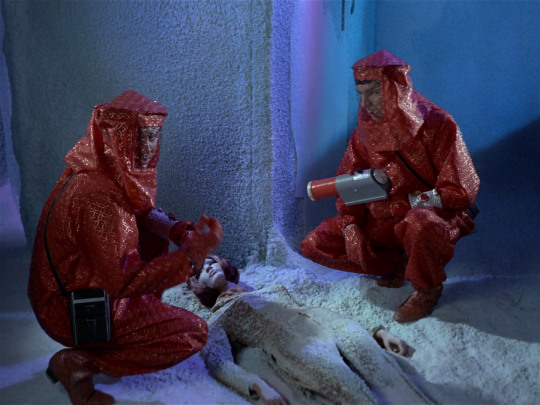
Commander Spock and Lieutenant Tormohlen don "protective suits" fashioned from shower curtains as they investigate the mysterious death of a mannequin crew member. (Season 1, Episode 4, "The Naked Time.")
Theiss was a key figure in shaping the visual identity of Star Trek’s universe. Over the course of the show’s three seasons, he designed costumes for a wide range of characters, from blue-skinned Andorians to the infamous Orion slave girls, and even the Nazi-inspired inhabitants of the planet Ekos. (Interestingly, the episode Patterns of Force, featuring Ekos, was banned from German television until 1995 due to its controversial themes.) [Source]
Theiss first met Star Trek creator Gene Roddenberry while Roddenberry was developing the show’s pilot. At the time, Theiss had gained attention for his innovative work on the science fiction play The Veldt, based on Ray Bradbury’s short story of the same name. This caught the eye of Star Trek writer Dorothy Catherine Fontana, who introduced Theiss to Roddenberry. By then, Roddenberry had already interviewed over a dozen costume designers but had yet to find someone who could bring his vision to life. Theiss’s creative approach, which often involved crafting unique costumes from unconventional materials, immediately resonated with Roddenberry. Their collaboration would continue for decades, even though, amusingly, Theiss never learned how to sew. [Source]
After the original Star Trek series was canceled, Theiss and Roddenberry remained close collaborators, working together on various projects until Roddenberry’s passing in 1991.


Left: William Theiss adjusts Susan Oliver's costume on the set of the 1965 pilot episode, "The Cage."
Right: William Theiss and Leonard Nimoy on the set of Season 2, Episode 26, "Assignment: Earth" (1968).
When designing Star Trek’s now-iconic multi-colored uniforms, Roddenberry drew inspiration from the color-coded uniforms used on American naval vessels, where quick role recognition was essential in low-visibility environments. As a former military pilot during World War II and later a police officer, Roddenberry had firsthand experience with structured, hierarchical organizations. These influences shaped not only Star Trek’s command structure but also its visual design. [Source]
Each division was assigned a distinct color: engineers, communications officers, and security personnel wore red; medical staff and scientists were dressed in blue; and command officers wore—believe it or not—green. (But more on that later.) All uniforms were paired with dark ash-colored trousers and high boots.
Star Trek is not typically associated with realism, which makes it surprising to learn that NASA was involved in the show’s production, offering advice to ensure it was "scientifically believable." Among their suggestions was the idea that 23rd-century astronauts might wear form-fitting jumpsuits. However, Gene Roddenberry dismissed the concept, humorously referring to the design as “long underwear.”
NBC, on the other hand, had entirely different priorities. The network insisted that female Starfleet officers wear more revealing attire, a demand that clashed with Roddenberry’s vision of a future where women were treated as equals to men. In the first pilot episode, The Cage (1965), Roddenberry boldly dressed female characters in pants—an unconventional choice for 1960s television. However, after much debate with the network, a compromise was reached: miniskirts. Highly fashionable at the time, they were paired with shorts and dark tights, blending contemporary trends with Star Trek’s futuristic aesthetic. [Source]
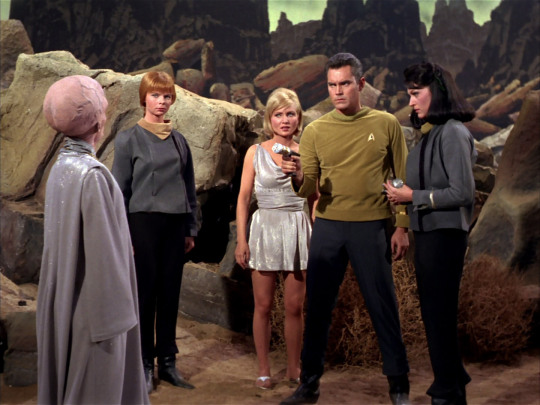
Captain Pike and a group of serious women in pants protect the heroine from an ass-headed very wise alien. The first pilot of Star Trek, "The Cage" (1965).
Years later, when NBC faced accusations of sexism and objectifying women, Nichelle Nichols, who played Uhura, defended the wardrobe choice in a BBC interview. She explained that the miniskirts weren’t unusual or inappropriate for the era:
“I was wearing them on the street. What's wrong with wearing them in the air? I wore 'em on airplanes. It was the era of the miniskirt. Everybody wore miniskirts.” [Source]
Grace Lee Whitney, who portrayed Janice Rand, echoed Nichols’s sentiment, adding that she “didn't think the women should be in pants” and that she wanted to “look like Flash Gordon” on screen. [Source]
Meanwhile, costume designer Bill Theiss had his own, more subtle approach to creating “revealing” costumes.
“He felt that revealing non-sexual flesh (the outside of the leg, off one shoulder, the back) promised that the viewer would see more — but they never did,” explained screenwriter D.C. Fontana, citing the gown worn by Lt. Palamas in Who Mourns for Adonais? as a prime example. [Source]
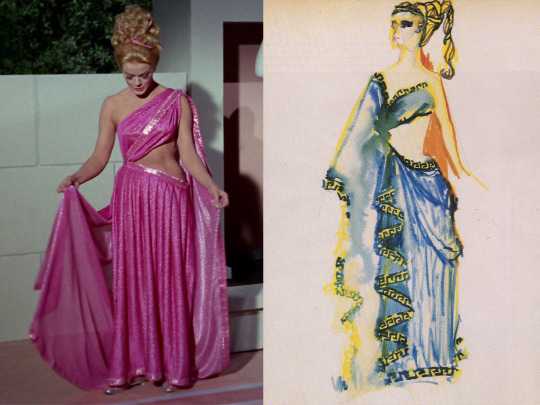
Lieutenant Palamas's "ancient Greek" dress from the episode "Who Mourns for Adonais?" alongside William Theiss's original sketch for the design.
When designing the original Star Trek uniforms, Theiss was tasked with creating something that reflected military influences while also looking futuristic and remaining inexpensive to produce. His approach was practical:
“As for where I get my ideas from… well, I don’t get them from my dreams or anything. Mainly, I get them from fabric that I see that’s available; I look for interesting patterns in the material itself,” Theiss once explained. [Source]
For the first two seasons, the Star Trek uniforms were made from velour, a newly invented fabric that was cheap, easy to maintain, and had an appealing sheen under studio lights. However, velour had its drawbacks: it tore easily (as evidenced by Captain Kirk’s frequent shirt-ripping battle scenes...) and shrank significantly after dry cleaning. Since the costumes had to be cleaned after every episode, viewers may notice that the uniforms became progressively tighter throughout the first two seasons. By the third season, velour was replaced with double-knit nylon, a more durable fabric used in professional baseball uniforms.


Left: Kirk's velour shirt from Season 1, Episode 10, "The Corbomite Maneuver." Right: The same shirt in Season 2, Episode 22, "By Any Other Name." Shatner is diligently sucking in his stomach.
This brings us to another interesting aspect of the original velour uniforms—their appearance on screen.
“It was one of those film stock things,” Theiss explained. “It photographed one way—burnt orange or gold. But in reality, it was another; the command shirts were definitely green.” [Source]
So, what color was Captain Kirk's uniform really? In truth, Kirk's uniform—like the rest of the command crew's—was olive green. However, under the bright studio lighting and the quirks of 1960s film stock, it appeared gold on screen. The greener hue becomes more noticeable in scenes filmed on location with natural light. The difference is also evident in photos of the original uniforms on display, such as those taken at an exhibit in Detroit, USA. In one image, taken under dimmer lighting without flash, the fabric looks closer to its true green color; in another, taken with flash, it appears more golden.


Left: Kirk's velour shirt photographed without flash—olive green. Right: Kirk's velour shirt photographed with flash—yellow gold.
This might come as a surprise to Star Trek fans, but it makes sense when you consider that Kirk's alternate uniforms—the wrap-around tunic and dress uniform—were distinctly green. This wasn’t an intentional design difference; those variations were simply made from a different fabric that didn’t react to light the way velour did.

“The problem is that a lot of my work is seen on screen for only two to three seconds, and even then, it might be in bad light or at a bad angle,” Theiss noted. “But then, you can't really justify taking two hours to light and block a scene just to showcase a costume.” The play's the thing, according to Theiss. "That's what it's really all about. It's not about the costumes." [Source]
The color discrepancy of the uniforms became an interesting challenge when animators began working on Star Trek: The Animated Series in 1973. They had to decide whether to depict the uniforms in their originally intended green or the gold shade that had become iconic to audiences.
At the time of Star Trek's release, many viewers were watching on black-and-white televisions, making it impossible for them to discern the true colors of the uniforms. At the Kirk/Spock convention, @kiscon, I spoke to a longtime Trek fan who told me she had no idea what color the uniforms were when she first watched the show as a teen. For those fortunate enough to see the series in color, however, the command uniforms became strongly associated with yellow. As a result, changing the uniforms to their intended green in Star Trek: The Animated Series would likely have confused audiences who had grown accustomed to the gold appearance on screen.
Ultimately, the gold uniform was canonized in The Animated Series and used in all fan materials until the release of the Star Trek feature films. Meanwhile, the trousers—whose color had also been slightly distorted on film—remained their original dark ash shade.
Because of these discrepancies, fans often debate which version of the uniform to follow when cosplaying or creating visual content. Many cosplayers choose to replicate the original olive-colored velour, trusting that proper lighting will naturally recreate the golden appearance seen on screen. Others opt for the now-iconic gold shade, reflecting the way the uniform has been depicted in official materials for decades.

Star Trek: The Animated Series (1973).
Ironically, NASA was right in its assumption that jumpsuits would become the norm for astronauts, and Roddenberry was forced to use them in the first feature-length Star Trek film, 1979's Star Trek: The Motion Picture. The multi-colored shirts were rejected by the studio as too garish, and the miniskirts worn by Uhura and most of the female crew members were already considered a relic of the sexist 1960s by 1979.
William Theiss, who designed the costumes for the original series, was too busy with other projects to work on the film, so Gene Roddenberry brought in a new costume designer, Robert Fletcher, who created the Starfleet uniforms now remembered as the worst in the franchise's history. In an effort to avoid comparisons to military uniforms, the studio opted for muted tones ranging from pale blue to dirty beige and nude shades. The result? The Enterprise crew looked more like spa staff than starship officers, and some background extras in nude-tone bodysuits appeared practically naked on screen. Not only did these uniforms make it impossible to distinguish the characters' ranks and departments, but they were also surprisingly impractical. The suits were sewn onto the actors' shoes, meaning they needed an assistant every time they went to the bathroom.

Star Trek: The Motion Picture (1979).
Luckily for us all, in the next film, Star Trek II: The Wrath of Khan (1982), it wasn’t just Khan who was filled with rage—the cast themselves rebelled and outright refused to wear the dreadful jumpsuits again.
Despite the failure of his design, Robert Fletcher remained as costume designer for the next three films, promising changes. In Star Trek II: The Wrath of Khan, the uniforms returned to a more military style, with the lead actors wearing maroon jackets with overlapping lapels that they could dramatically unbutton if their character was meant to look tired or stressed. If you look closely, you’ll notice that these maroon uniforms were actually redyed and slightly modified versions of the jumpsuits from The Motion Picture. The reason for the maroon color? It was the best shade that worked with the existing fabric from the first film. [Source]
William Theiss, reflecting on Fletcher’s designs, commented:
“Bob Fletcher is a very fine designer, and I mean that very sincerely. We don’t design the same way, and there’s no reason we should—or could. It’s apples and oranges. But my personal feeling is, if you go to a structured, woven fabric and do the kind of tailoring and structuring he’s done, it puts those costumes back, historically, 500 years, with shoulder seams and shoulder pads of that type.” [Source]

Star Trek II: The Wrath of Khan (1982). Everyone turned red with anger.
In Star Trek: The Next Generation, Roddenberry reunited with Bill Theiss, and together they decided to bring back the iconic miniskirts as part of the uniform, but with a twist—they wanted to make them inclusive. In The Next Generation, male crew members were occasionally seen wearing the same miniskirts or “scants” (a hybrid of skirts and pants), reflecting Roddenberry and Theiss’s vision of a future where gender norms no longer dictated clothing choices.
However, the social climate of the 1980s and 1990s wasn’t as receptive to this progressive idea.
“Having both actresses and actors in skirts was meant to diffuse any sexist accusations that might have been associated with designs from the old show,” Theiss explained. “It’s also fashionably probable that, 400 years from now, men would wear skants. Even so, there was usually a problem on the set,” he admits, “because some wisecracks were always made.” Theiss emphasized that he wanted his actors to feel at ease in the designs. “I won’t force an actor or actress to wear something they’re not at least 80 percent comfortable with.” [Source]

While Theiss’s designs were undeniably groundbreaking, he was known to be a challenging person to work with. Constantly preoccupied with time and budget constraints, Theiss had little patience for anyone—whether they were directors, producers, or even Gene Roddenberry himself. He was even less tolerant of people who approached him simply to praise or critique his work, or even just to say hello. His philosophy was simple: “Better to be rude than to delay filming.”
Actors, extras, and costume assistants often recalled how Theiss would dart around the set, frantically hemming, tucking, and adjusting costumes between takes. Many of the alien outfits seen on the show weren’t actually "costumes" in the traditional sense. Instead, they were often assembled from patches, ribbons, scarves, curtains, and wire, with actors being "stitched into" them directly on set. [Source]
For example, Janice Rand's iconic beehive hairstyle was crafted from several wigs braided together over a cone. Grace Lee Whitney, who played Rand, recalls running back and forth between the dressing room and Roddenberry’s office with Theiss, constantly piling on more hair. Each time, Roddenberry would stare at her intensely, then declare, “Higher!” Whitney and Theiss would rush back to add more wigs until the hairstyle reached its iconic height. [Source]

One Smithsonian Institute employee, who worked with Theiss in 1992 while preparing for a Star Trek costume exhibit, recalls combing through the Paramount warehouse filled with racks and boxes of costumes. She was amazed to discover that most of the "costumes" were actually scraps of fabric neatly hung on a single hanger. Yet, when these scraps were sewn, tied, and pinned together, they became the iconic designs we now associate with Star Trek.
Andrea Weaver, one of Theiss’s fellow costume designers on the original series, remembers:
“Bill Theiss was a creative designer. His designs for Star Trek were original, rather than distilled from other sources or redefinitions of previous works. This is what I appreciated about Bill Theiss. I thought he was a truly unique and rare costume creator.” [Source]
William Ware Theiss’s contributions to Star Trek are legendary. His uniforms for both Star Trek: The Original Series and Star Trek: The Next Generation remain iconic, instantly recognizable even by those who aren’t fans of the franchise. His innovative, DIY approach to creating futuristic costumes brought a distinctive charm to the original series and left an enduring legacy.
Here are some of his most memorable designs:


Left: Season 2, Episode 11: "Friday's Child" Right: Season 3, Episode 13: "Elaan of Troyius"


Left: Season 1, Episode 15: "Shore Leave" Right: Season 3, Episode 20: "The Way to Eden"


Left: Season 2, Episode 1: "Amok Time" Right: Season 1, Episode 23: "A Taste of Armageddon"


Left: Season 2, Episode 9: "Metamorphosis" Right: Season 1, Episode 6: "Mudd's Women"


Left: Season 3, Episode 5: "Is There in Truth No Beauty?" Right: Season 1, Episode 15: "Shore Leave"


Left: Season 1, Episode 23: "A Taste of Armageddon"Right: Season 2, Episode 16: "The Gamesters of Triskelion"


Left: Season 3, Episode 11: "Wink of an Eye" Right: Season 3, Episode 8: "For the World Is Hollow and I Have Touched the Sky"
#star trek#star trek tos#spock#kirk#s'chn t'gai spock#star trek the original series#star trek tng#star trek the next generation#star trek the motion picture#star trek the animated series#star trek the wrath of khan#articles#eldar of zemlya#captain kirk#james t kirk#behind the scenes#wardrobe#costume#costume design#costume department#filmmaking#gene roddenberry#bill theiss#william shatner#leonard nimoy
130 notes
·
View notes
Text

The Gulf of Mexico has been renamed The Gulf of America for Google Maps users inside the United States. The name change stems from an executive order signed by President Donald Trump on his first day in office, which directs U.S. authorities to make the change to official maps. Users in Mexico will continue seeing Gulf of Mexico, while people in the rest of the world will see both names.
Source imagery: NASA
109 notes
·
View notes